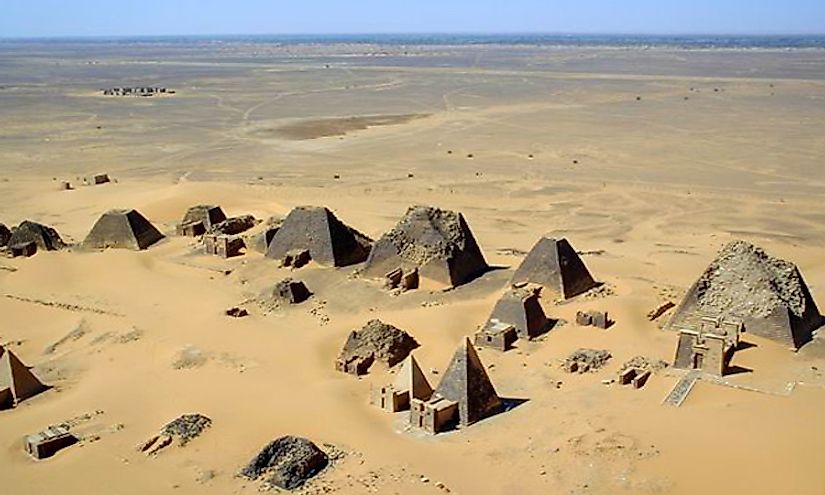Ancient Kush Sites Of Meroe Island, Sudan

5. Description and History -
The ancient Kush site of Meroe Island is located between the Nile and Atbara rivers and for a long time the area was the center of the ancient Kingdom of Kush (1070 BC - 350 AD). The area is made up of the city of Meroe and its accompanying cemetery, which from 591 BC until 350 AD was the capital of the kingdom and the location where the Kings of Kushite lived. The area also included two other settlements that were associated with the capital that also served as religious centers, Naqa and Musawwarat es-Sufra. While the city of Meroe is located between the rivers, its cemetery, and other two sites are located in the semi-desert area nearby. The ancient Kush sites of Meroe Island in Sudan, where declared a United Nations Educational, Scientific and Cultural Organization (UNESCO) World Heritage Site in 2011.
4. Tourism and Education -
The ancient Kush site of Meroe Island do not get a lot of tourists to visit the site, mostly because of their out of the way location, the fact that they are less known then the ruins in nearby Egypt and the fact that they are in Sudan which has had problem with civil unrest in its country and nearby regions. The site is a lovely place to visit though as tourists get to experience the past wonders of an ancient civilization and time that have long since passed.
3. Uniqueness -
The ancient Kush site of Meroe Island was the second UNESCO world heritage site in Sudan and is currently only one of three in the country. The sites wide range of mostly well-preserved monuments and buildings so the greatness of the former Kingdom of Kush and how their contact with other civilizations throughout Africa, the Middle East, and Europe influenced them and led to different decorative and structural elements in their culture's works. The pyramids in the remains of the city of Meroe show how the Kushite built their funerary monuments. The site is also unique since a lot of the remains of the former Kushite civilization were removed in the 6th century AD after Christianity arrive in the region.
2. Natural Surroundings, Sights, and Sounds -
The area around the site is draped in a semi-desert atmosphere, with sand all around and the Nile River being relatively near the site. The view of the environment is one of sand, reddish-brown colored hills and the occasional green bushes that dot the landscape. The buildings at the site are varied as they include temples, palaces, pyramids, industrial areas and water reservoirs that give visitors an idea of how the Kush Empire was shaped in its over one thousand year history and its interactions with other civilizations.
1. Threats and Conservation -
The ancient Kush site of Meroe Island is protected in a variety of ways. The Antiquities Protection Ordinance, which gives the site the status of being a national monument, was passed in 1905 and amended in 1952 when Sudan was a colony called Anglo-Egyptian Sudan and amended again under the Sudanese government in 1999. The area is also protected via a Presidential Decree in 2003 and a provision of Article 13 of the country's interim constitution from 2005, which established a natural reserve and buffer zones around the site, as well as a management committee to govern the site. The property is managed by the National Corporation of Antiquities and Museums (NCAM) and the site has an appointed on-site manager, as well as guards that protect the area. The site is under no threat, besides the wear and tear from the natural elements and the passage of time. There has been a few area where reconstruction work has been done to the site, but the majority of the buildings and monuments are in their original state.







